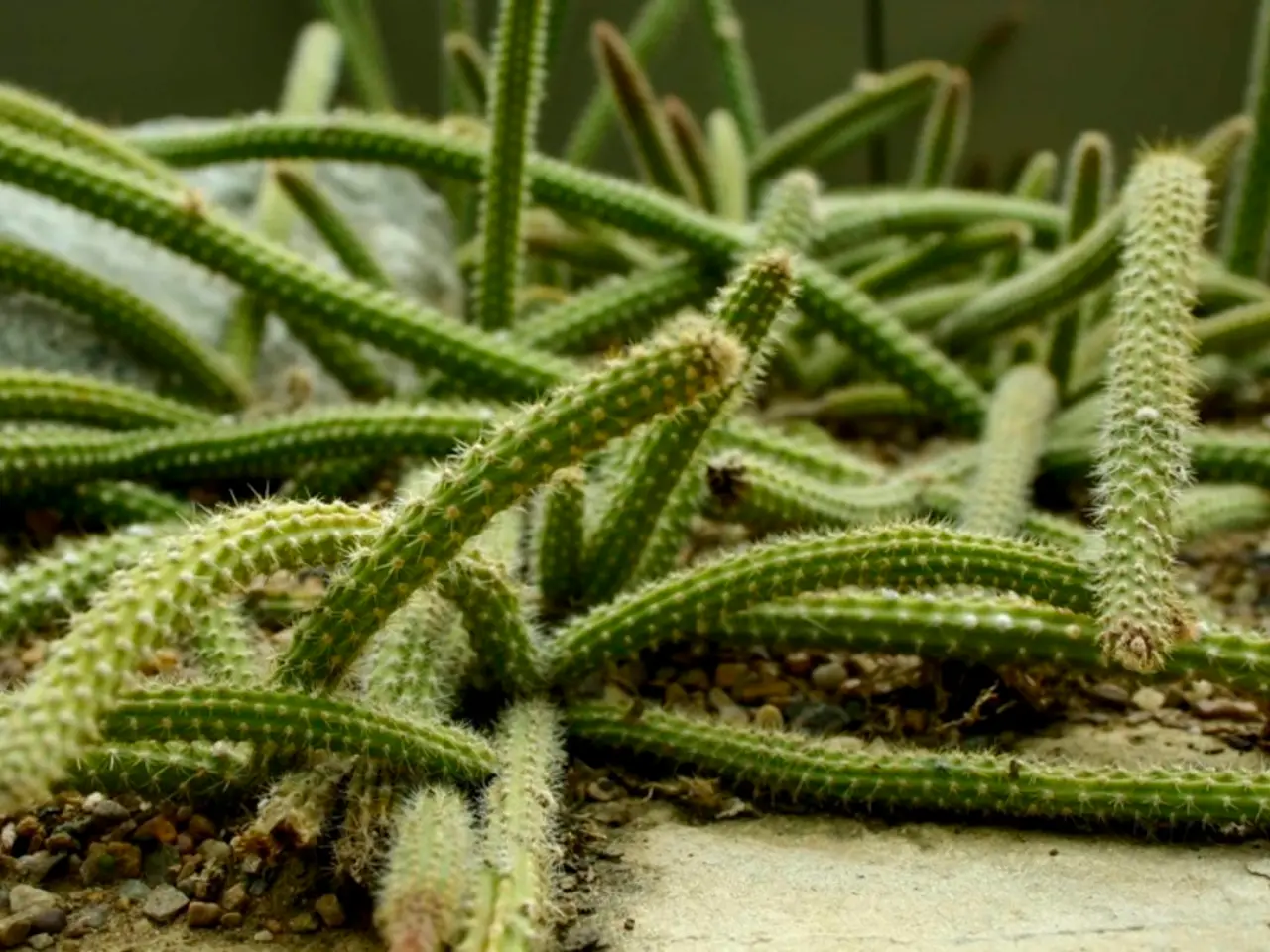Caring for Cacti: Essential Guidelines for Succulent Conditioning
In the realm of houseplants, cacti are undeniably popular choices for their unique charm and hardy nature. This article aims to provide a comprehensive guide on how to care for these succulent wonders, ensuring they thrive all year round.
Firstly, understanding the light requirements of cactus plants is crucial. Most cacti need at least 6 hours of full sun daily to flourish. Indoors, place them near a sunny window, while outdoors, choose a sunny spot. This bright, direct sunlight helps them photosynthesize effectively.
Watering is another essential aspect of cactus care. While it may seem counterintuitive, these desert dwellers require deep but infrequent watering. Allow the soil to dry out completely between waterings to avoid root rot. Typically, watering every 2–4 weeks during the growing season is sufficient. In winter, when the cactus goes dormant, suspend watering altogether. Ensure the pot has drainage holes and water enough so it runs out of these holes, confirming thorough soil saturation.
Temperature is another factor that influences cactus health. Maintain warm temperatures between 65–85°F (18–29°C). Cacti prefer low humidity and are generally not frost-tolerant, though some species tolerate temperatures down to about 30°F (-1°C).
Fertilizing cacti is necessary during the growing season (spring and summer) with a diluted balanced fertilizer formulated for cacti or succulents. Avoid fertilizing in winter.
When it comes to pests and diseases, watch out for common issues like mealybugs and root rot from overwatering. Promptly remove any dead or damaged parts using clean, sharp tools.
Potting cactus plants requires a well-draining cactus or succulent soil mix, often enhanced with sand or perlite. Choose pots with drainage holes. Repot every 2–3 years or when the cactus outgrows its container.
Propagation is another fascinating aspect of cactus care. This can be achieved by separating offsets ("pups") from the base or by planting cuttings and seeds. Allow cuttings to callous before planting, and remove offsets during spring or summer for best success.
Lastly, when arranging cacti, consider their sunlight needs and growth habits. Grouping them in sunny areas with adequate spacing ensures good air circulation and light exposure. Use decorative pots with drainage to combine aesthetics and plant health.
By following these guidelines, you'll be well on your way to keeping your cactus healthy and thriving throughout the year. Whether you're a seasoned gardener or a novice green thumb, these tips will help you enjoy the beauty and resilience of these fascinating plants.
Incorporating cacti into a home-and-garden lifestyle, particularly the home-and-garden segment of gardening, can be a rewarding endeavor. Proper arrangement of cacti considers their sunlight needs and growth habits, such as grouping them in sunny areas with adequate spacing to ensure good air circulation and light exposure, using decorative pots with drainage to combine aesthetics and plant health.




